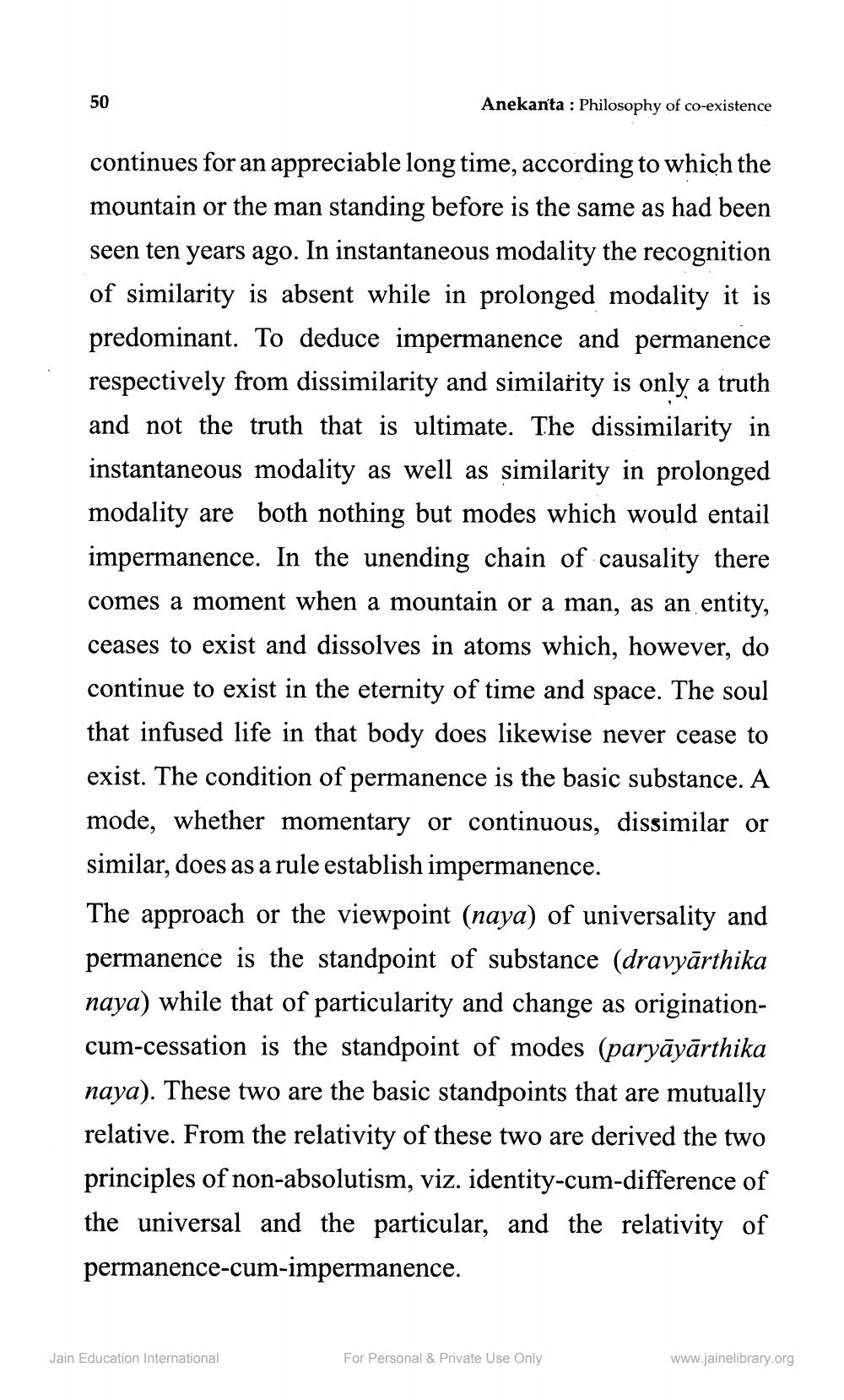________________
Anekanta : Philosophy of co-existence
continues for an appreciable long time, according to which the mountain or the man standing before is the same as had been seen ten years ago. In instantaneous modality the recognition of similarity is absent while in prolonged modality it is predominant. To deduce impermanence and permanence respectively from dissimilarity and similarity is only a truth and not the truth that is ultimate. The dissimilarity in instantaneous modality as well as similarity in prolonged modality are both nothing but modes which would entail impermanence. In the unending chain of causality there comes a moment when a mountain or a man, as an entity, ceases to exist and dissolves in atoms which, however, do continue to exist in the eternity of time and space. The soul that infused life in that body does likewise never cease to exist. The condition of permanence is the basic substance. A mode, whether momentary or continuous, dissimilar or similar, does as a rule establish impermanence. The approach or the viewpoint (naya) of universality and permanence is the standpoint of substance (dravyārthika naya) while that of particularity and change as originationcum-cessation is the standpoint of modes (paryāyārthika naya). These two are the basic standpoints that are mutually relative. From the relativity of these two are derived the two principles of non-absolutism, viz. identity-cum-difference of the universal and the particular, and the relativity of permanence-cum-impermanence.
Jain Education International
For Personal & Private Use Only
www.jainelibrary.org




